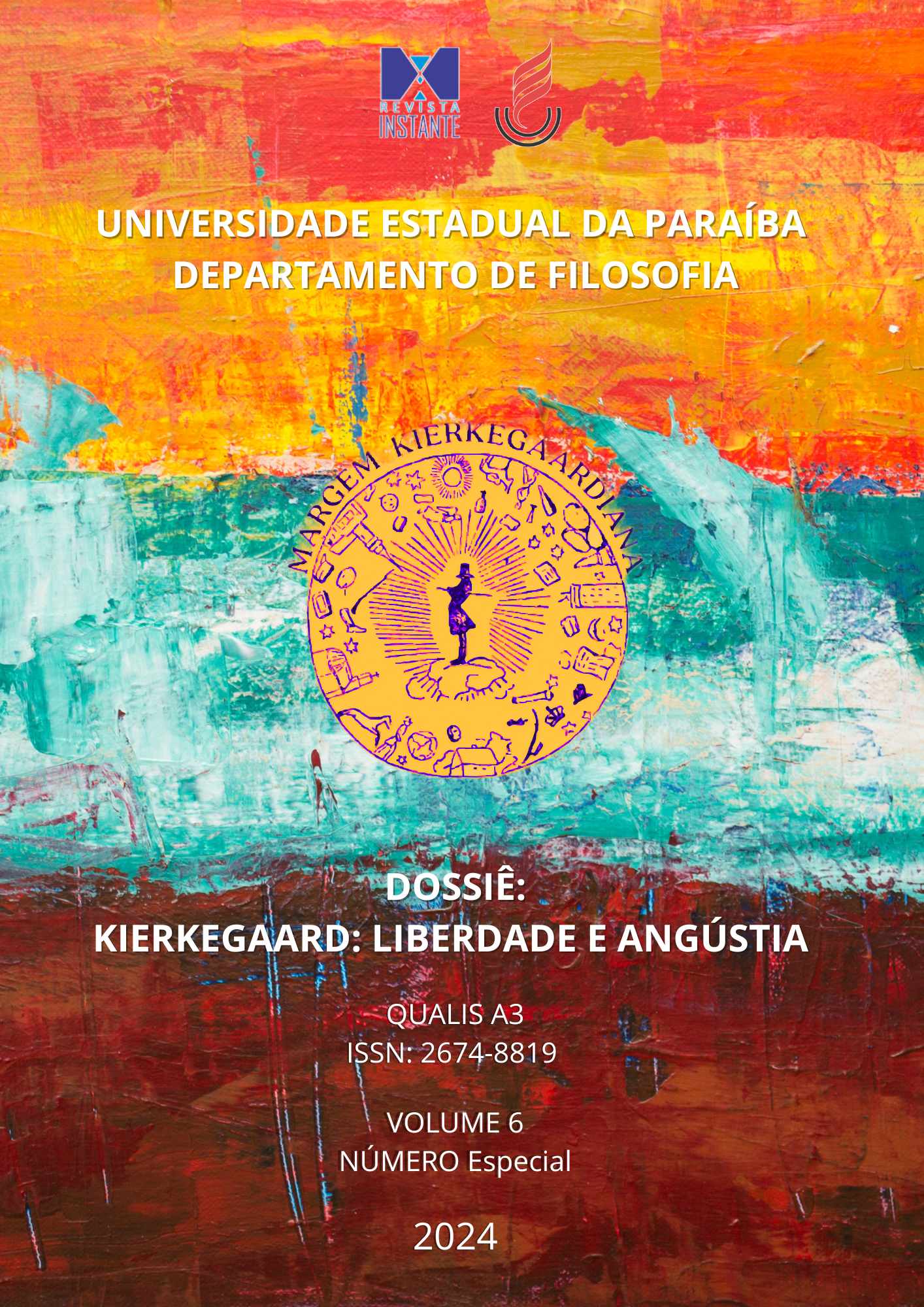APPROXIMATIONS BETWEEN THE “SCHIZOID CONDITION” IN LAING AND THE CATEGORY OF THE DEMONIC "IN KIERKEGAARD’S CONCEPT OF ANGUISH"
Keywords:
Laing. Kierkegaard. Schizoid. Psychopathology. Existential-phenomenology.Abstract
The objective of this work is to bring together the schizoid condition, described by the existential psychiatrist Ronald Laing (1927-1989), and the demonic category, described by the Danish philosopher Søren Kierkegaard (1813-1855). Currently, the schizoid condition finds some definitions in mental disorder manuals, however, the main manual used in contemporary society, the DSM (Diagnostic and Statistical Manual of Mental Disorders), had released its first version in 1953, that is, a few years ago. before the psychiatrist published his main work The Divided Self (1960). However, Laing intended to go beyond the classical psychiatry references of his time; he wanted to understand the schizoid condition from an existential point of view and, therefore, turned to Kierkegaard. For Laing, the self in the schizoid condition is considered as more or less disembodied, felt as a mental entity and which penetrates the condition called closure by Kierkegaard. This condition of closure, of which Laing speaks, is found in chapter IV of the work The concept of anguish (1844) by the pseudonym Vigilius Haufniensis. In it, Haufniensis deals with closure under the rubric of the demonic. Therefore, the work consists of a brief investigation of Laing's use of Kierkegaard’s category of the demonic for an existential understanding of the schizoid condition.
References
ALMEIDA, J. M. (2007). Kierkegaard: pensador da existência. Existência e Arte: Revista Eletrônica do Grupo PET–Ciências Humanas, Estética e Artes da Universidade Federal de São João Del-Rei, São João Del Rei, 3(3), pp. 45-78. Disponível em: <https://ufsj.edu.br/portalrepositorio/File/existenciaearte/Edicoes/3_Edicao/Jorge%20Miranda%20de%20Almeida%20FILOSOFIA%20ok.pdf>. Acessado em: 28 de maio 2023.
BECKER, Ernest. A negação da morte. Trad.: Luiz Carlos do Nascimento Silva. Rio de Janeiro: Record, 2020.
BROCKLEHURST, Steven. The psychiatrist who wanted to make madness normal. BBC Scotland news website. Disponível em: <https://www.bbc.com/news/uk-scotland-38816660>. Acessado em: 26 de abril de 2024.
CARNEIRO, Miguel Esteves et al. A metanoia de RD Laing no cinema. Revista Contemporânea, v. 3, n. 1, pp. 291-298, 2023. Disponível em: <https://ojs.revistacontemporane a.com/ojs/index.php/home/article/view/385>. Acessado em: 26 de abril de 2024.
DSM-5 (Manual diagnóstico e estatístico dos transtornos mentais). Trad.: Maria Inês Corrêa Nascimento. Porto Alegre: Artmed, 2014.
ECKERMANN, Johann. Conversações com Goethe sobre os últimos anos de sua vida: 1823-1832. Trad.: Mario Luiz Frungillo. São Paulo: Unesp, 2016.
FERRO, Nuno. A exceção e o demoníaco: em torno de “Kierkegaard”. Revista Brasileira de Filosofia da Religião, v. 8, n. 1, pp. 70-101, 2021. Acessado em: 16 de novembro de 2022.
GABRIEL, G. A., & TEIXEIRA, J. A. C. Ronald D. Laing: A política da psicopatologia. Análise Psicológica, 2007, pp. 661-673. Disponível em: <https://repositorio.isp a.pt/bitstream/10400.12/121/1/AP%2025%284%29%20661-673.pdf>. Acessado em: 28 de maio de 2023.
GARDINER, Patrick. Kierkegaard. Trad.: Antonio Carlos Vilela. São Paulo: Loyola, 2001.
GOETHE, Johann W. Fausto: uma tragédia (Primeira Parte). Trad.: Jenny Kablin Segall. São Paulo: Editora 34, 2016.
KIERKEGAARD, Søren. Temor e Tremor. Trad.: Elisabete M. de Sousa. Lisboa: Relógio D’Água, 2009.
__________. O conceito de angústia: uma simples reflexão psicológico-demonstrativa direcionada ao problema dogmático do pecado hereditário. Trad.: Álvaro Luiz Montenegro Valls. Petrópolis, RJ: Vozes; São Paulo: São Francisco, 2010 (Coleção Pensamento Humano).
__________. Pós-escrito às migalhas filosóficas (vol. I). Trad.: Álvaro L.M. Valls e Marilia Murta de Almeida. Petrópolis: Vozes; Bragança Paulista: Editora Universitária São Francisco 2013 (Coleção Pensamento Humano).
LAING, Ronald. O eu dividido: um estudo existencial da sanidade e da loucura. Trad.: Áurea Brito Weissemberg. Petrópolis, RJ: Vozes, 1975.
MAY, Rollo. Eros e Repressão: amor e vontade. Trad.: Áurea Brito Weissemberg. Petrópolis, RJ: Vozes, 1982.










